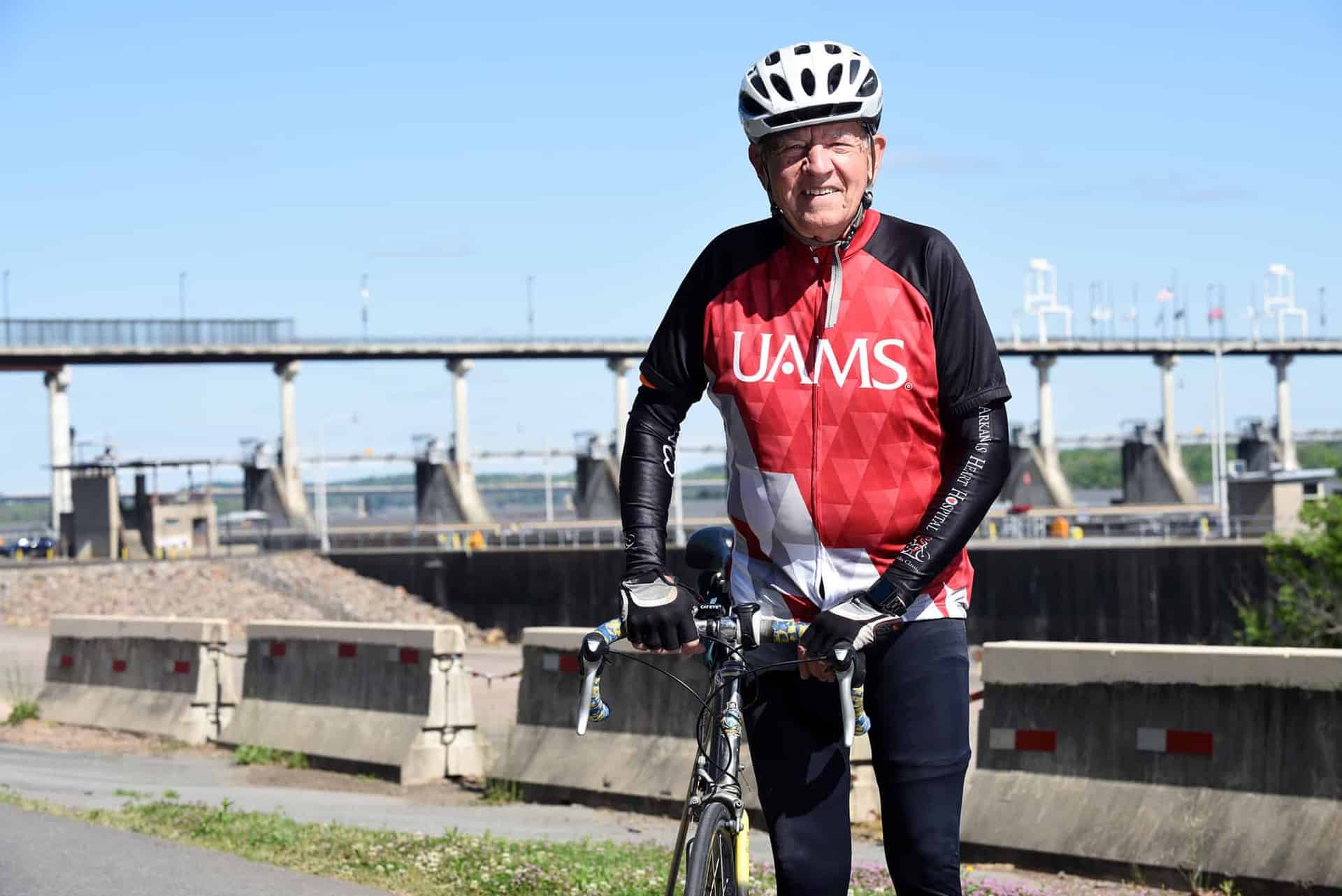81-Year-Old Training for Second Ride for Research for UAMS Myeloma Institute
| June 28, 2018 | Don Gephardt of North Little Rock, loves to cycle. At 81, he’s not letting his age or his diagnosis put the brakes on any of the miles he covers on the 16-speed Litespeed he bought in early 1997 to ride across the United States.
Three years ago, after his physician found extra protein in his blood during a routine check-up, a bone marrow biopsy led to being diagnosed with a condition called lymphoma in the bone marrow as well as monoclonal gammopathy of undetermined significance (MGUS). MGUS is non-cancerous but could progress to myeloma, a cancer of plasma cells in the blood.
“I got rid of the lymphoma after eight months of chemotherapy. With the MGUS, we’re just waiting and watching right now,” he said. Regular check-ups are essential because every year about 1 percent of people with MGUS develop multiple myeloma. When Gephardt developed an infection in his right foot in late 2016, his physician recommended he come to UAMS where he was seen by orthopaedic surgeon, Corey Montgomery, M.D., and myeloma physician Sharmilan Thanendrarajan, M.D. No additional cancer was found.
While at UAMS during the summer of 2017, Gephardt learned about the inaugural Ride for Research, held in conjunction with the Big Dam Bridge 100 ride, and signed up for it.
Last year, at 80, he rode 27 miles in the Ride for Research, averaging 11 miles an hour.
“The first year of the Big Dam Bridge 100 ride in 2006, I rode the full 100 miles but haven’t ridden that far since,” he said, adding that he has completed 68 miles a few times.
Before becoming a patient at the Myeloma Institute, Gephardt had been to UAMS to work on the computer system years ago when he worked for IBM. He retired in 1996 and shortly afterward took up cycling.
Two years after retiring, he tackled one of the items on his bucket list and rode across the nation with the American Lung Association’s Big Ride Across America in memory of his older brother who had battled lung cancer and died in 1995. After raising $6,000 in donations, he and the other cyclists rode the 3,339-mile ride from Seattle, Washington, to Washington, D.C. Gephardt, riding an average of 83 miles a day, completed the ride in 48 days with 40 days on the bike and eight days of rest.
Gephardt’s wife, Dian, gave her blessing for his adventure.
“All she asked for in return was a phone call every day,” he said, adding that before the popularity of cell phones, her request could prove challenging.
“Some days it was harder than others to find a phone, but I succeeded,” he said, chuckling. During his journey, he also sent postcards from across the country daily to the three grandchildren he had at the time.
In the fall of 1988, he rode through Vermont with friends. While he also owns a mountain bike, it’s his road bike he tries to ride at least a couple of times a week.
“About 95 percent of the riding I do today is along the river trail,” he said. “It’s a pleasant place to ride.”
His goal for this year’s Ride for Research is the 50-mile course.
“I’m hoping it doesn’t get any worse,” he said of his diagnosis of MGUS. “It’s still stable and not at a high enough level to take treatment.”
Why, in the midst of battling his own cancers, is taking part in Ride for Research a priority for Gephardt?
“It’s so important to let others know about myeloma, its related diseases, and to raise awareness of them.”
